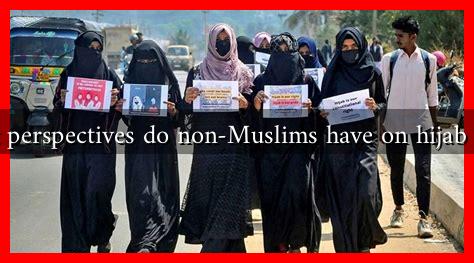-
Table of Contents
What Perspectives Do Non-Muslims Have on Hijab Laws?
The hijab, a traditional headscarf worn by many Muslim women, has become a focal point of debate in various societies, particularly in the context of laws regulating its use. Non-Muslims often have diverse perspectives on hijab laws, influenced by cultural, political, and social factors. This article explores these perspectives, providing insights into the complexities surrounding hijab laws and their implications for freedom, identity, and gender equality.
Understanding Hijab Laws
Hijab laws vary significantly across different countries and regions. In some nations, such as France, laws prohibit the wearing of religious symbols, including the hijab, in public schools. Conversely, countries like Iran enforce mandatory hijab laws, requiring women to cover their hair in public. These contrasting approaches highlight the ongoing global debate about religious expression and women’s rights.
Perspectives from Non-Muslims
Non-Muslims’ views on hijab laws can be categorized into several key perspectives:
- Support for Individual Freedom: Many non-Muslims advocate for the right of women to choose whether or not to wear the hijab. They argue that personal choice is a fundamental human right, and laws restricting hijab use infringe upon individual freedoms.
- Concerns About Gender Equality: Some non-Muslims view hijab laws, particularly those that are mandatory, as oppressive. They argue that such laws perpetuate gender inequality and reinforce patriarchal structures within society.
- Cultural Sensitivity: A segment of non-Muslims emphasizes the importance of cultural understanding and respect. They believe that hijab laws should be approached with sensitivity to the cultural and religious significance of the hijab for many Muslim women.
- Secularism and Public Space: In secular societies, some non-Muslims argue that religious symbols, including the hijab, should not be displayed in public institutions. They believe that this maintains a neutral public space free from religious influence.
Case Studies: Global Perspectives
To better understand non-Muslim perspectives on hijab laws, we can examine specific case studies from different countries:
France: A Secular Approach
In France, the 2004 law banning the wearing of conspicuous religious symbols in public schools sparked significant debate. Many non-Muslims supported the law as a means to uphold secularism, arguing that it prevents religious influence in education. However, critics contended that the law disproportionately affects Muslim girls, limiting their freedom of expression. A 2019 study by the Pew Research Center found that 62% of French respondents believed that wearing the hijab should be a personal choice, indicating a divide in public opinion.
Iran: Mandatory Hijab Laws
In contrast, Iran’s mandatory hijab laws have drawn international criticism. Non-Muslims often view these laws as emblematic of a repressive regime that restricts women’s rights. Reports from organizations like Amnesty International highlight the struggles faced by women who resist these laws, showcasing a broader concern for human rights violations.
Statistics and Public Opinion
Public opinion on hijab laws varies widely across different demographics. According to a 2021 survey conducted by the Arab Barometer, 55% of respondents in Tunisia believed that women should have the right to choose whether to wear the hijab. In contrast, only 30% of respondents in Saudi Arabia supported this view. These statistics illustrate the diverse attitudes towards hijab laws within the Muslim world and among non-Muslims.
Conclusion: A Complex Debate
The perspectives of non-Muslims on hijab laws are multifaceted and often reflect broader societal values regarding freedom, gender equality, and cultural identity. While some advocate for individual choice and cultural sensitivity, others express concerns about gender oppression and the role of religion in public life. As societies continue to grapple with these issues, it is essential to foster dialogue that respects diverse viewpoints and promotes understanding.
Ultimately, the debate surrounding hijab laws is not merely about a piece of clothing; it encompasses fundamental questions about identity, autonomy, and the rights of women in society. As we navigate this complex landscape, it is crucial to listen to the voices of those directly affected and to strive for solutions that honor both individual freedoms and cultural traditions.
For further reading on this topic, you can explore resources from organizations like Amnesty International and Pew Research Center.


